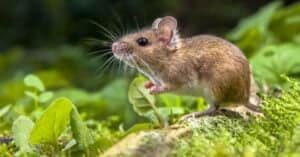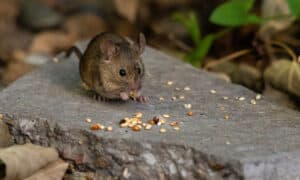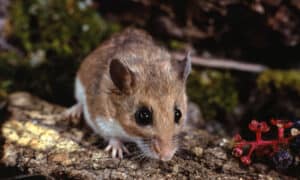Hamsters are small rodents of the subfamily Cricetinae, which contains about 19 species. The golden or Syrian hamster is one of the best-known species of hamster. The Syrian hamsters have prominent barrel-shaped bodies and stubby tails. The standard-sized Syrian hamster is available in three main varieties; the short-haired fancy bear hamster, the long-haired teddy bear hamster, and the classic golden hamster.
Fancy bear hamsters and Syrian hamsters are both names for the same hamster. In fact, Syrian hamsters have many names, mostly created to market them and sell more. You might hear them called Teddy Bear Hamsters, Fancy Bears, and even Panda Bear Hamsters. These are all words for the same adorable little animal.
This article will compare the fancy bear hamster and Syrian hamster in almost every way, including preferred habitats, diets, appearance, and many more. Read on for more information about these rodents.
Comparing Fancy Bear Hamster vs. Syrian Hamster

| Key Differences | Fancy Bear Hamster | Syrian Hamster |
|---|---|---|
| Color | Originally, only the golden color was available, but selective breeding has produced several fancy colors, including cinnamon, gray, cream, black, and more. | Originally, only the golden color was available, but selective breeding has produced several fancy colors, including cinnamon, gray, cream, black, and more. |
| Physical appearance | Either long-haired, short-haired, rex, or satin | Either long-haired, short-haired, rex, or satin |
| Habitat | Thrive in any habitat where they can burrow | Thrive in any habitat where they can burrow |
| Diet | Consumes a wide variety of food, including cockroaches, wasps, ants, flies, seeds, nuts, grains, fruits, and insects | Consumes a wide variety of food, including cockroaches, wasps, ants, flies, seeds, nuts, grains, fruits, and insects |
| Habits and personality | Solitary animals. They have varying personalities, just like all animals. | Solitary animals. They have varying personalities, just like all animals. |
| Origin | Originated in Syria | Originated in Syria |
The Key Differences Between the Fancy Bear Hamster and the Syrian Hamster
The fancy bear hamster and the Syrian hamster are identical. They share colors, diets, characteristics, and origins. Breeders have created many fun names for the Syrian hamster, and Fancy Bear Hamster is one of those fun names for the same animal.
Let’s examine all these details to help you understand them better.
Fancy Bear Hamster vs Syrian Hamster: Color
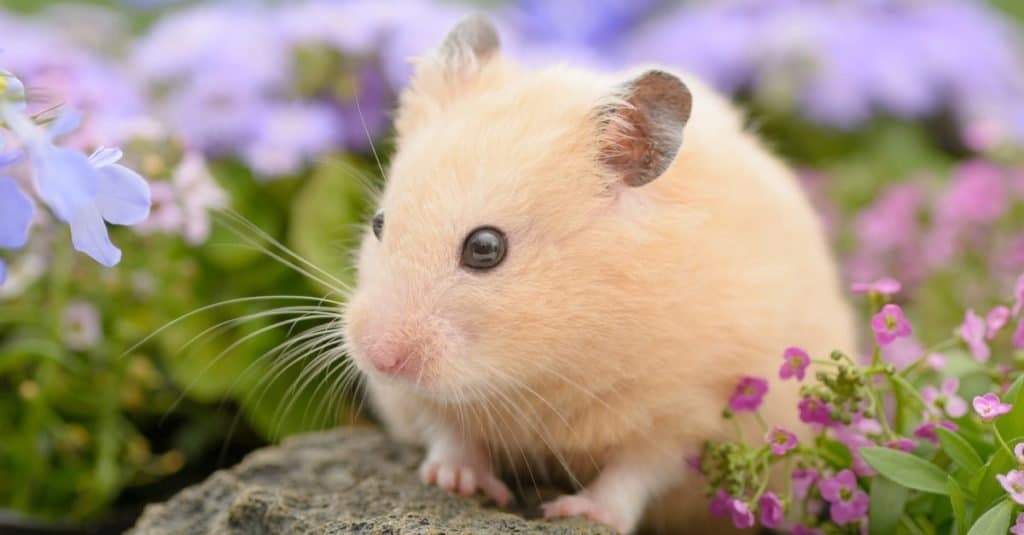
Some species of Syrian hamsters come in a few different shades.
©stock_shot/Shutterstock.com
Initially, only the golden color pattern was available across most Syrian hamster species. Still, selective breeding has produced several fancy bear hamsters with unique colors, including cinnamon, grey, cream, and black. Some fancy bear hamsters are named for their color variations, such as the tan honey bear hamster, the white polar bear hamster, the black-and-white panda bear hamster, the black spotted Dalmatian hamster, and more.
Although they are now bred in solid colors, some species of Syrian hamsters come in a few different shades. For example, the Siberian hamster, also known as the winter white Russian dwarf, is available in purplish grey with an ivory belly and a grey stripe on the back or may have white hairs sprinkled throughout the coat.
Physical Appearance
Syrian hamsters, also called fancy bear hamsters, come in several different coat types. Some common coat types include short-haired, long-haired, rex, and satin. Fancy bear hamsters usually fall under the category of short-haired hamsters. The long-haired Syrians are also called teddy bear hamsters. The two fur types are satin, glossy, and rex, which have wave or curly textures. Both short-haired and long-haired hamsters may either have satin or rex coat types.
Habitat
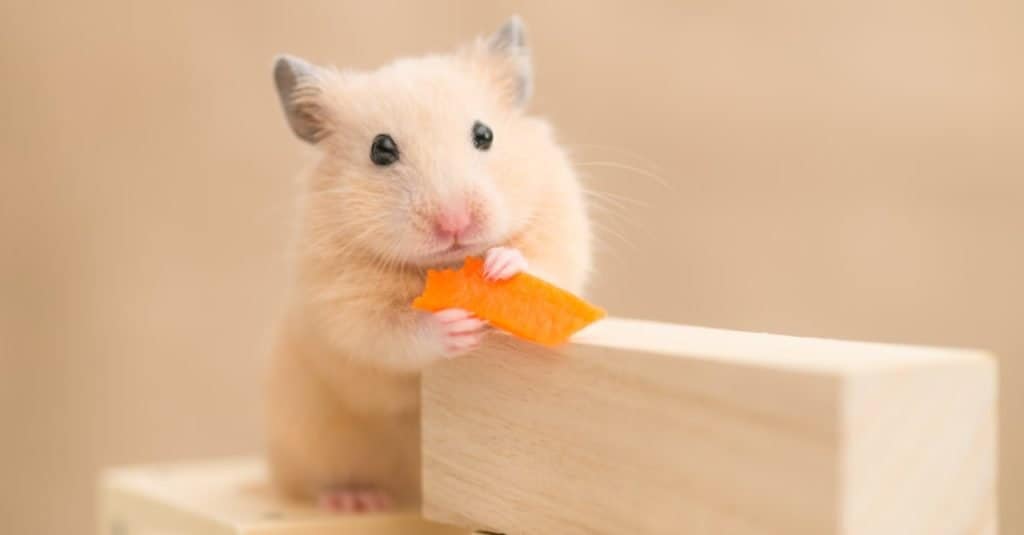
Syrian hamsters are solitary creatures and should be kept one per enclosure.
©stock_shot/Shutterstock.com
Fancy bear hamsters prefer a habitat where they can burrow and which allows separate spaces for sleeping, feeding, and playing. They thrive in an arid climate with temperatures between 65 and 75 degrees. They will exhibit decreased activity and may start hibernating when temperatures fall below 60 degrees. Fancy bear hamsters kept as pets can live in a large enclosure as long as there is a layer of aspen shavings or shredded paper to serve as bedding. They are comfortable in a warm room in an area free of cold drafts.
The wild population of Syrian hamsters is found in fertile, agricultural, and densely populated areas in various Middle Eastern parts, including northern Syria and southern Turkey. Their habitats include the edges of deserts, dunes, plateaus, steppes, and more. All types of hamsters need a large space if kept as pets, as they travel up to 5 miles per day in the wild.
Fancy Bear Hamster vs. Syrian Hamster: Diet
All Syrian hamsters are omnivorous. Wild Syrian hamsters feed on a wide variety of food, including nuts, seeds, flies, cockroaches, wasps, ants, and many other insects.
Domesticated hamsters eat need an identical diet full of various proteins (mealworms are usually a favorite), fresh vegetables, grains, seeds, nuts, and fruit.
Fancy Bear Hamster vs. Syrian Hamster: Habits and Personality
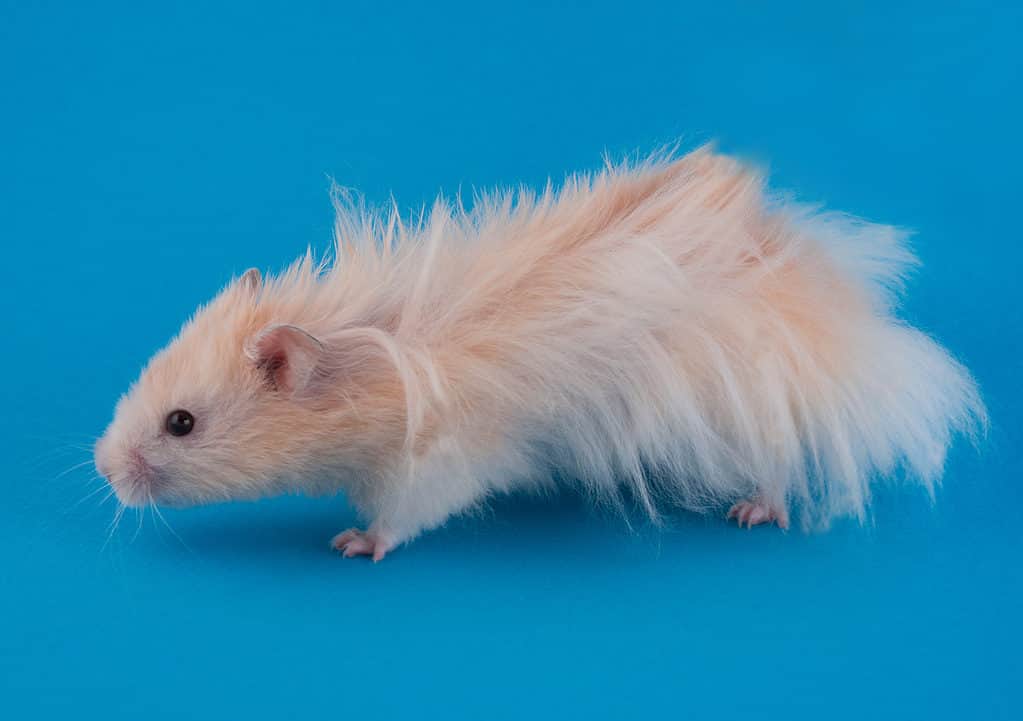
Syrian hamsters can have long or short hair.
©Olena Kurashova/Shutterstock.com
Fancy bear hamsters are quite docile and friendly. They are also very curious and adventurous. So, these creatures love wandering around to explore their surroundings. However, they may react by biting if they become scared or startled. Although fancy bear hamsters are small, their bites can hurt.
Hamsters are territorial and intolerant of each other. They usually attack each other, except when a male meets a female in heat. Even siblings may start attacking each other once they mature, sometimes to death. Some Syrian hamster species in captivity treat any foreign scent as a threat. Therefore, they may kill and eat healthy young hamsters who interact with humans. It is always recommended to keep one hamster per enclosure for their own happiness and safety.
Fancy Bear Hamster vs. Syrian Hamster: Origin
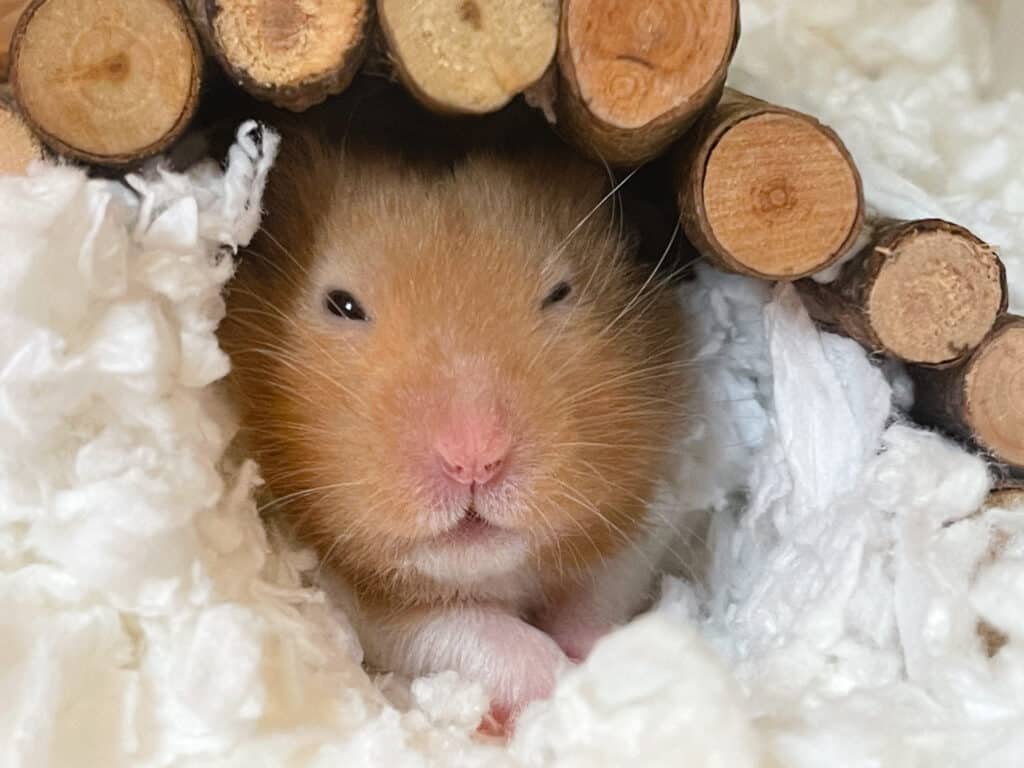
Hamsters are very active in the wild and travel up to 5 miles per day. As pets, they need very large enclosures (like a 40-gallon aquarium).
©iStock.com/Conny V
Syrian hamsters originated from Syria and were first described in 1797 by Science in The Natural History of Aleppo edition. They were later bred in Jerusalem as laboratory animals in 1930 and shipped to Britain in 1931. The descendants were passed on to private breeders in 1937.
Over time, selective breeding has produced several hamster species in new colors. In 1971, a separate stock of hamsters was exported from Syria to the United States. However, it’s thought that the current domestic golden hamster may have descended from the ones captured in Syria in 1930.
The photo featured at the top of this post is ©
Thank you for reading! Have some feedback for us? Contact the AZ Animals editorial team.



